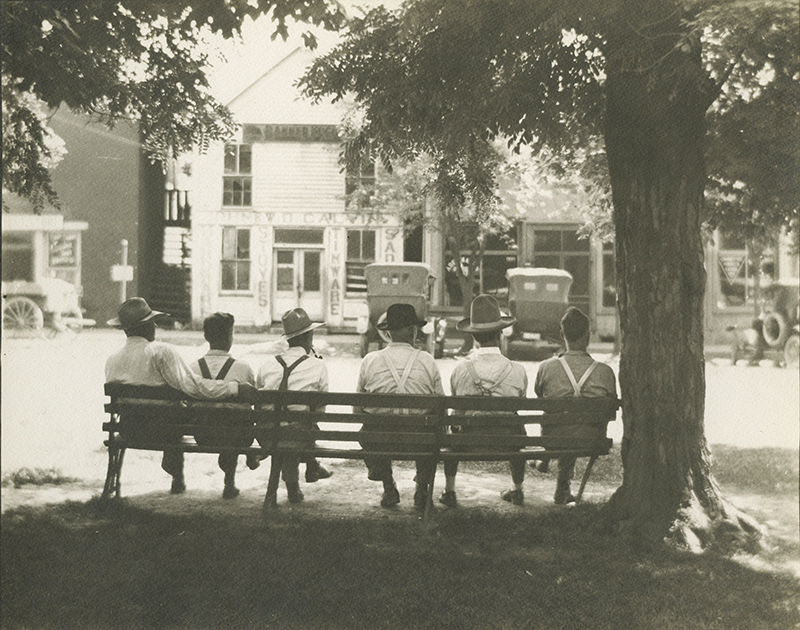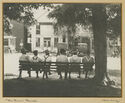
19th, 20th & 21st Century Fine Prints
707-546-7352 · fax 707-546-7924 · web: www.annexgalleries.com · email: artannex@aol.com
The Liars’ Bench by Frank M. Hohenberger



The Liars’ Bench
Frank M. Hohenberger
The Liars’ Bench
The Liars’ Bench was located on the courthouse lawn of Nashville, Indiana. It was apparently 17 feet long and could accommodate six or seven men. The Lilly Library at Indiana University lists the names of the liars in this photograph as Scott Moser, Jack Woods, Bub Henderson, Sam Anthony, Harry Kelp, and Duard Calvin. Across the street and facing the liars is the John & W.D. Calvin Hardware Store which offers its customers hardware, stoves, tinware, and sadlery (sic). To the left of the hardware store was Genolin’s Drugstore—the upstairs of which Baumann rented for a studio. Martin Krause wrote about this photograph: “It is the only photograph I know that features the outside stair entrance to the workshop on the second floor that Baumann describes.”
Krause went on to note, “According to Hohenberger, the wives in Nashville became so fed up with their husbands wasting all their time exchanging yarns on the bench and pitching horseshoes instead of working that, like Temperance women, they took hatchets to the bench in 1929 and utterly demolished it. Hohenberger took a photo of the rubble.
This story is included in a book, If You Don't Outdie Me, based on Hohenberger's regular columns in the Indianapolis Star, “From Down in the Hills of Brown,” edited by Dillon Bustin, published by Indiana University Press forty years ago, but still available in paperback on Amazon. It’s a good read and deals with many of the locals who Baumann knew, particularly Ma Ferguson, who was Hohenberger's chief source of local gossip.”
Frank M. Hohenberger photographed the people and places of Brown County, Indiana for forty-seven years. The signature photograph of Gustave Baumann in his Nashville studio printing his blocks for The Mill Pond is by Hohenberger. The Lilly Library holds the estate of Frank Michael Hohenberger and the negative number for The Liars’ Bench is 448.



